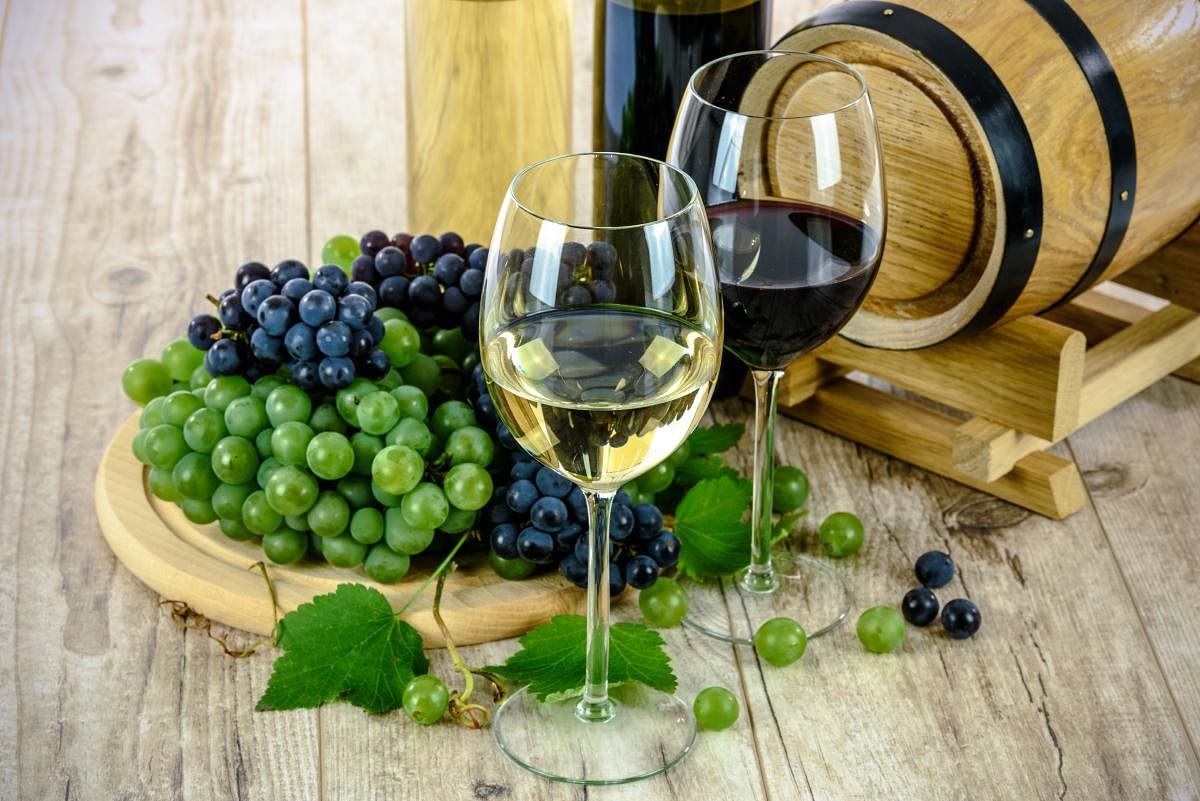
Viniculture and wine tourism have caught the fancy of tourists in India with Nashik in Maharashtra being the largest producer of wine and Karnataka following closely at second. Thanks to the picturesque vineyards and the exotic experience one can enjoy during these wine-tasting sessions, wine tourism is the trending holiday option for a lot of Indian families. A vineyard touring experience becomes more special when you know the untold story behind the sparkling glass of wine you hold, taste and are asked to smell the heady mix. When you visit these vineyards, you are encouraged to take a small sip and hold it in your mouth. Then you need to swirl it around and breathe in a little. This is done to oxygenate the wine. Most of the flavours you get while drinking a glass of wine come through your nose as it is connected to the back of your mouth. This is the reason the guide during these vineyard tours advises you not to gulp the wine but instead follow the right way to drink it. Any food or drink is enjoyed more when one knows how different cultures have made and used them over the years in their day-to-day life. Most of us think France, Italy and Spain are the places where wine making and wine culture originated as these locations are synonymous with anything related to wine in our minds. Although France is considered the wine capital of the world and makes some of the most popular wines on the planet, the real story began in China around 7000–6600 BCE from a Neolithic Site.
Evidence found at the site unearthed a fermented beverage made of a mixture of rice, honey and fruit stored in clay jars to create this drink made of wild grapes. Researchers have uncovered a cave in Armenia that has strong evidence that wine was used for various ceremonies as well as for medical purposes. If the Egyptians take credit for making an early version of wine from red grapes, the Phoenicians started the wine trade making it popular across the Mediterranean, including Greece, Italy, Israel, Turkey and Syria. The Phoenicians trade brought about many changes in history. The Jews used wine in religious ceremonies. While the ancient Greeks drank wine and used it for trade, health and religion, the Greeks named a God after it — Dionysus. The Romans made wine part of their daily life and made it available easily to the rich and poor. The Catholic church and Christianity being prominent religious forces in Roman Empire used wine in their religious rituals. It is an enduring influence that wine has had on humankind not only for social pleasure but for spiritual practice too.
One ingredient, one recipe
This column celebrates food and explores the possibility of forming an invisible chain that will bind us together as a family. Readers can send us a unique recipe that has either a childhood memory attached to it or even a food philosophy. We will hand-pick one unique recipe and publish it along with this column the following month. Please share your heritage recipe and story in 300 words with “Food Family: Love” mentioned in the subject line to
dhonsunday@deccanherald.co.in by Nov 14.
(The writer is the author of the cookbook Manna: Your Guide to Indian & Continental Cooking which is a result of her culinary journey during which she documented some of the most sought-after heritage recipes of India and elsewhere.)
Sweet sweet wine
As a family, we make a lot of wine and it is no wonder that we have many ceramic jars of which a few are as old as 40 years and were even used by our forefathers. We make different types of wine at home but the wine I personally enjoy the most is the honey wine.
Honey wine
Ingredients
Honey: 3 kg
Water: 9 kg
(exactly 3 times
the amount of honey)
Cloves: 3
Cinnamon: 1 1/2 inch
Yeast: 1 level
tablespoon
Method
Mix honey and water and cook on the stove on a medium flame. Let the mixture boil. Allow the mixture to boil for 10 minutes. Now use a cheesecloth and tie cloves and cinnamon into a bundle. Add the bundle to the boiling water. Allow it to boil for 30 minutes. Switch off the stove. Drain and remove the bundle. Allow the entire mixture to cool down completely. Remove two cups of the solution and mix the yeast well. Pour this mixture over the rest of the solution and mix well. Now pour into big ceramic jars. Cover the lid of the jar with a cotton cloth and place the lid on the ceramic jar. For the next 21 days, let the jar remain undisturbed in a dark place. After two months the wine is ready to use.
(Recipe courtesy
Marinette Iris.)